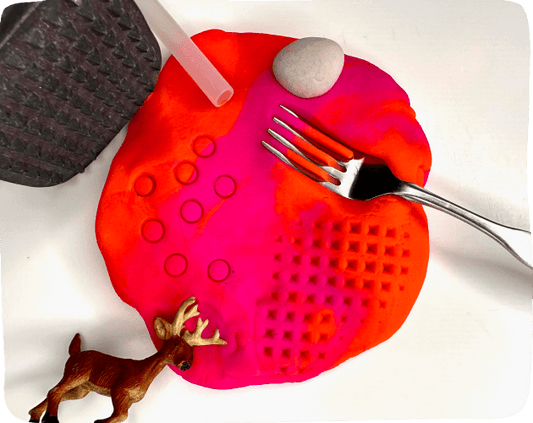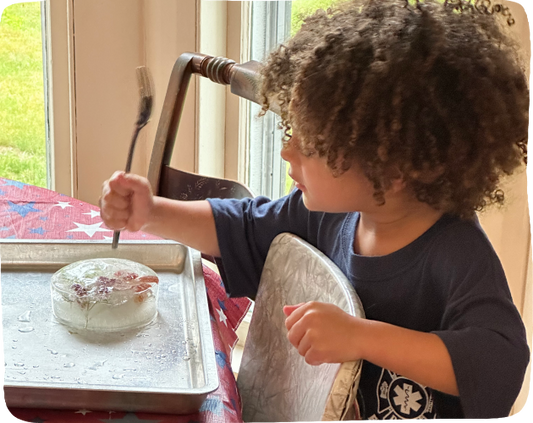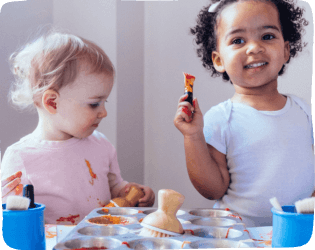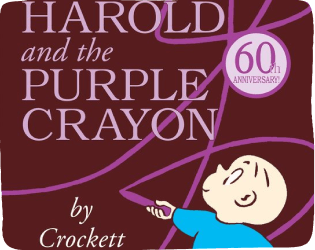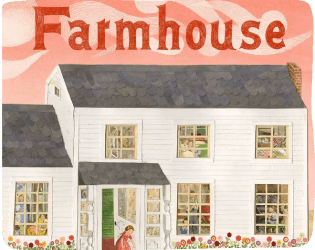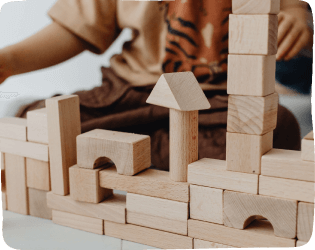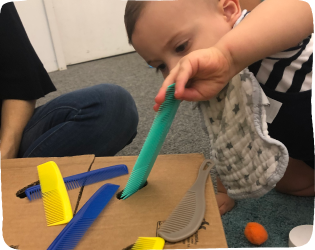
Unlock Creativity with Everyday Items
Fun and Educational Play Ideas
At LᐧMᐧNᐧOᐧPlay!, we believe that the most enriching play experiences don’t require fancy toys or gadgets. In fact, some of the best learning moments come from repurposing everyday items. By transforming the ordinary into the extraordinary, children are invited to engage in open-ended, hands-on exploration that promotes cognitive, physical, and emotional development. The beauty of these materials is that they offer endless opportunities for creativity and discovery—all with the items you already have on hand!
What Are We Learning and Why Does It Matter?
When children play with everyday objects, they not only learn important fine motor skills like grasping and pushing but also gain a deeper understanding of cause and effect. These types of activities encourage independent thinking and problem solving while fostering an early love for learning.
We’ve curated everyday play materials into three categories: Strings & Things, Dump & Fill, and Grasp & Push. Each of these play categories is designed to meet children at different developmental stages while supporting creativity and connection. Let’s break down how these materials foster learning and lay the foundation for more complex cognitive tasks as children grow.
How to Reimagine Everyday Items for Play
The magic of everyday materials lies in their versatility. Whether it’s a pile of old buttons, a few string scraps, or a couple of empty containers, these objects can transform into something fun and educational with just a little imagination.
Strings & Things

Strings & Things help children develop dexterity and coordination as they practice threading and stringing objects.
Look around your house for objects with holes or loops. Toilet paper rolls, metal jar rings, napkin rings, and rubber bands can all be strung together to create necklaces, mobiles, or even simple sculptures. As your child strings these objects, they are honing fine motor skills, while exploring the tactile sensations of different textures.
Grasp & Push

Grasp & Push work helps develop fine motor skills, including hand-eye coordination and finger strength.
As children develop their pincer grasp, everyday items like crayons, markers, or small snack pieces (think Cheerios or raisins) can be used for grasping and transferring. These tasks help strengthen their hands, build dexterity, and improve hand-eye coordination. You can also create fun challenges like filling an egg carton with small objects or pushing pieces of playdough into a mold.
Dump & Fill

Dump & Fill activities promote an understanding of cause and effect while also improving focus and attention span.
For activities that explore cause and effect, look for containers with handles, such as old yogurt cups, cleaned-out laundry detergent bottles, or empty juice cartons. Fill these with natural materials like leaves, pebbles, or cotton balls, and invite your child to practice dumping and filling. These repetitive actions foster focus and understanding of concepts like volume, size, and balance. Add a sensory element with water play, where children can pour, splash, and fill with pitchers or cups.
Why Does This Matter?
Providing children with everyday items for play encourages independent thinking and helps develop the skills needed to manipulate objects, solve problems, and understand basic concepts of math, science, and language. It also nurtures a sense of wonder—when children realize that even the most ordinary object can be transformed into something exciting, they learn to appreciate the world around them.

For caregivers, this kind of play also offers a unique opportunity to bond. By joining in the fun, narrating the play, and offering language support, you help your child deepen their understanding of their actions and grow their vocabulary.
Extend the Learning at Home
You don’t need to spend a lot of money to create meaningful play experiences. Here are some materials you can use to extend this type of play at home:
- Strings & Things: Toilet paper rolls, buttons, and other small objects with holes. Pieces of yarn, string, gardening twine, etc.
- Dump & Fill: Empty yogurt containers, cardboard boxes, or even a small plastic bottle. Rice, beans, household items, or small toys to make it more engaging.
- Grasp & Push: Cheerios, raisins, containers with holds, and tape.

Remember, the goal is to let your child’s natural curiosity and creativity drive the play. When children use everyday materials to experiment and create, they aren’t just having fun—they’re learning skills that will serve them for years to come.

By embracing the world of open-ended play with everyday materials, you will support your child's imagination in ways that are environmentally (and wallet) friendly! So, look around your home and let the play begin—sometimes, the simplest objects can lead to the most profound learning experiences.
Looking for more ways to spark imagination and creativity? Get your StoryTime Play Packs! Each month, you’ll receive a carefully chosen book and fun, hands-on activities to make learning through play easy and delightful. Learn more and start your adventure today!



